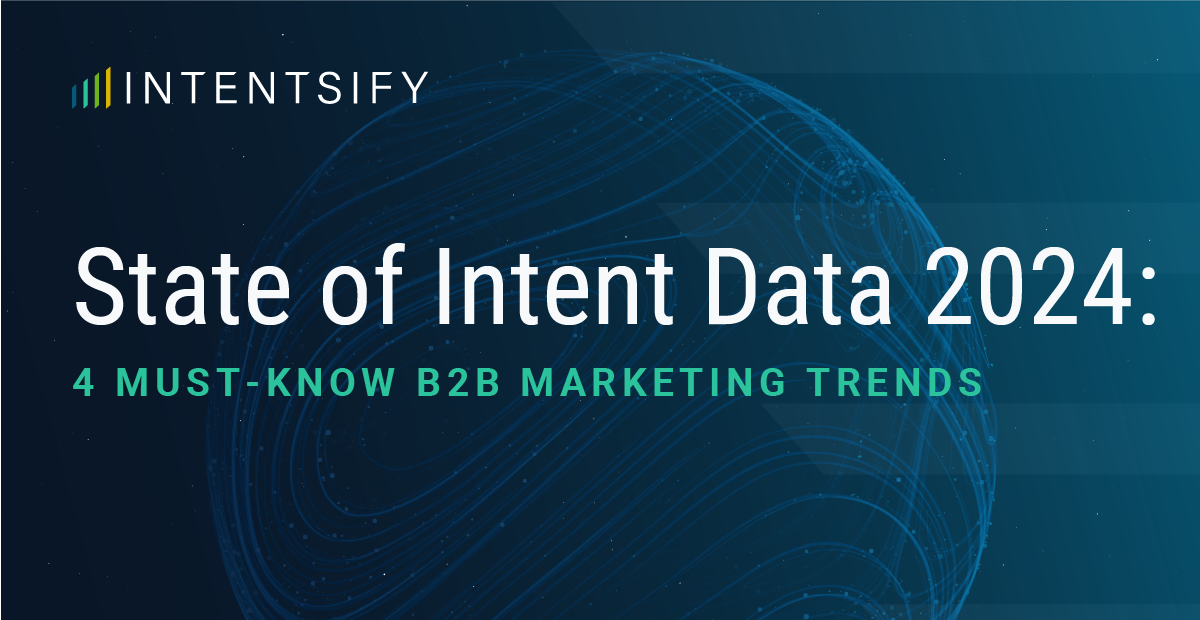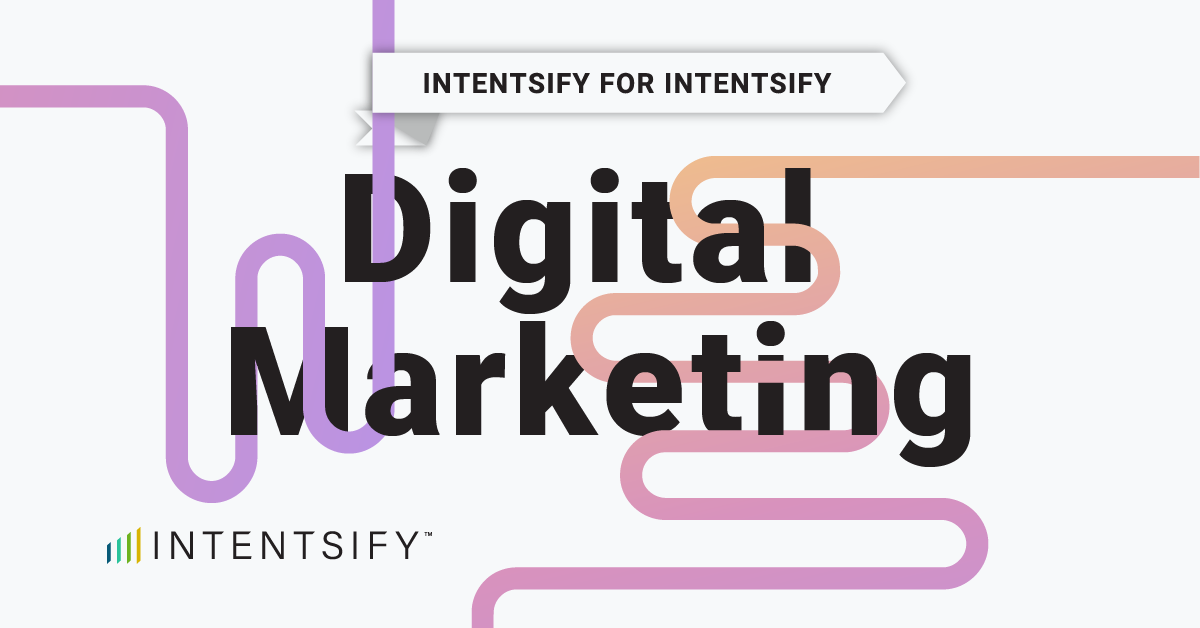B2B intent data has become a critical tool for sales and marketing organizations to gain a competitive advantage. Its popularity is the result of many factors—varied use cases across the buyer and customer journey, the rapid rise of account-based go-to-market-strategies, and the outsized impact it has on pipeline and revenue.
When organizations learn about the power of intent data, common questions arise. How is intent data collected? What is the difference between first- and third-party intent data? What are topics versus keywords? How can I take full advantage of my intent data investment? Check out Intentsify’s complete guide to intent data for an introduction and deep dive into these questions and more.
Another common question people ask is the difference between account and contact-level intent data. In this blog, we’ll explain these two types of intent data, the pros and cons of each, and ways in which you can leverage both to your advantage.
Types of Intent Data Explained
In general, intent data is any information generated by businesses’ online research and content consumption activities. B2B marketing and sales teams use intent data to gain insights into which organizations are increasingly showing interest in specific products or services and to what extent.
There are two types of intent data outputs: account level and contact level.
- Account-level intent data aggregates B2B online research and content consumption activities to an organization or account. Some account-level intent data providers use data science to understand the intensity of changes in the online research and content consumption activity of an organization or account compared to its “normal” baseline activity to provide a more accurate intent signal.
- Contact-level intent data monitors the B2B online research and content consumption activities of an individual that works for an organization. Some contact-level intent data providers mine interactions and engagement activity of individuals across the public web and social media channels to provide insight into an individual’s level of intent.
Account-Level Intent Data
The options for intent data providers have grown rapidly over the past few years, and most provide account-level data. When selecting a vendor, it’s important to understand the pros and cons of account-level intent data to ensure it suits your needs.
Pros of Account-Level Intent Data
- Privacy compliance: Regulations like GDPR and CCPA are at the top of everyone’s minds. Why? Because the rules of consumer engagement are blurry, and the fines—hefty. Account-level intent data gives you peace of mind because online research and content consumption are aggregated at the organization level. Account-level intent data is widely considered an ethical and privacy-compliant source of intent data. Some intent data providers operating publisher networks or data cooperatives acquire consent from website visitors, further strengthening the ethical nature of data collection.
- Reduce false positives: Organizations do more online research and content consumption than individuals do. That means there’s more data for collection, resulting in stronger data science models. An individual may be researching because it’s part of their job or because it’s a subject of interest—said research doesn’t necessarily signal buying intent. Account-level intent data provides a stronger signal for B2B sales and marketing teams to take action because it’s representative of an organizational shift in interest.
- Monitor the entire buying committee: The B2B buying process has become increasingly complex. The typical buying committee consists of 6 to 10 decision-makers across multiple buyer journey stages. Account-level intent data helps sales and marketing teams get a broader understanding of the online research and content consumption behaviors of the decision-makers and the overall organization.
Cons of Account-Level Intent Data
- Lack of contact-level data: Probably the biggest con of account-level data is the lack of insight into the individuals performing research. Especially at enterprise organizations with multiple office locations and thousands of employees, it can be difficult to pinpoint the individuals showing intent.
- Sales activation is challenging: One of the most common and powerful intent data use cases is sales account prioritization. For organizations running sales prioritization programs, account-level intent data requires BDRs or sales executives to acquire contacts via contact databases.
Contact-Level Intent Data
While less common, contact-level intent data is an option. Contact-level data may sound like the holy grail for sales and marketing teams, but it’s important for organizations to weigh the pros and cons before making an investment.
Pros of Contact-Level Intent Data
- Sales activation use case: Knowing which individual is actively researching your products or services is exactly what sales teams want and need. Contact-level intent data provides sales teams with insight into who to call and the subject of interest to increase the likelihood of a sale.
Cons of Contact-Level Intent Data
- Privacy compliance is unclear: Attention toward the collection of personal data with regulations like GDPR and CCPA is at an all-time high. It’s unclear if contact-level intent data is compliant with current regulations and industry standards surrounding ethically sourced data and the handling of personal information. Organizations interested in purchasing contact-level intent data should dig deeper with vendors to ensure compliance, as the consequences of collecting contact data could far outweigh the benefits.
- Greater chance for false positives: When monitoring an individual’s online research or interactions, it’s difficult to decipher true changes in intent. That person may be performing research for their job or simply interested in the subject. Organizations should consider augmenting contact-level intent data with other sources to prevent false positives.
- Lack of insight into buying committee intent: There’s often not one single decision-maker when making a B2B purchase decision. In today’s complex B2B buying process, you must engage the entire buying committee. Contact-level intent data may not provide visibility into the buying committee’s research activities, which are stronger indicators of intent.
Both contact and account-level intent data can be used to inform a holistic, intent data-driven go-to-market strategy. But before investing in either type, learn everything you can about the benefits and drawbacks of both to leverage its impact.
Intentsify: An Ethical Intent Data Provider
Intentsify’s intent data provides buyer intent signals only at the account level out of respect for consumer privacy. To activate these account-level intent insights at an individual level—in an ethical and privacy-compliant manner—Intentsify’s intent-driven content syndication programs enable customers to gain contact-level information from individuals at intent-identified accounts who have opted into providing their data. The resulting lead data is compliant with all applicable data privacy regulations and provides customers the benefit of both account and contact-level intent data.






